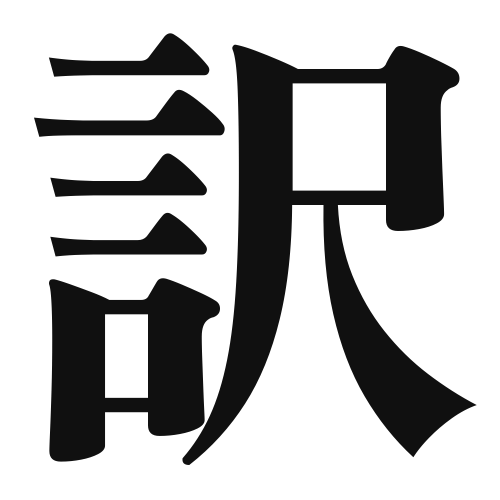1. Overview of Meaning
The kanji “訳” (yaku) primarily means “to translate” or “to interpret.” It is often used in contexts related to language translation and explanation of meanings.
2. Formation and Radical
Formation of the Kanji: The kanji “訳” is a compound character that combines elements to convey its meaning. It consists of the radical “言” (gen), which relates to speech or language, and “訳” (yaku), which indicates the act of translating or interpreting.
Radical: The radical of “訳” is “言” (gen), which is commonly associated with words, speech, and communication.
3. Examples of Usage
Common Words and Phrases: Some frequently used terms that include “訳” are:
- 翻訳 (honyaku) – translation
- 通訳 (tsuuyaku) – interpretation
- 訳す (yakusu) – to translate
Example Sentences in Daily Conversation:
- この本を英語に訳してもらえますか? (Kono hon o eigo ni yakushite moraemasu ka?) – Can you translate this book into English?
- 彼の言っていることの訳がわからない。 (Kare no itte iru koto no yaku ga wakaranai.) – I don’t understand the meaning of what he is saying.
4. Synonyms and Antonyms
Similar Kanji: A similar kanji is “解” (kai), which means “to solve” or “to untie.” While both kanji involve understanding, “訳” focuses on translation and interpretation, whereas “解” emphasizes resolution or clarification.
Opposite Kanji: An antonym for “訳” could be “無訳” (muyaku), which means “untranslated” or “without translation,” indicating the absence of interpretation or translation.
5. Cultural and Historical Background
Relation to Japanese Culture: The concept of translation is significant in Japanese culture, especially in the context of literature, art, and international communication. The ability to translate effectively is highly valued.
Proverbs and Idioms: One relevant proverb is “言葉は心の窓” (Kotoba wa kokoro no mado), meaning “Words are the windows to the heart,” highlighting the importance of language in expressing thoughts and feelings, which relates to the function of “訳” in translation and interpretation.
